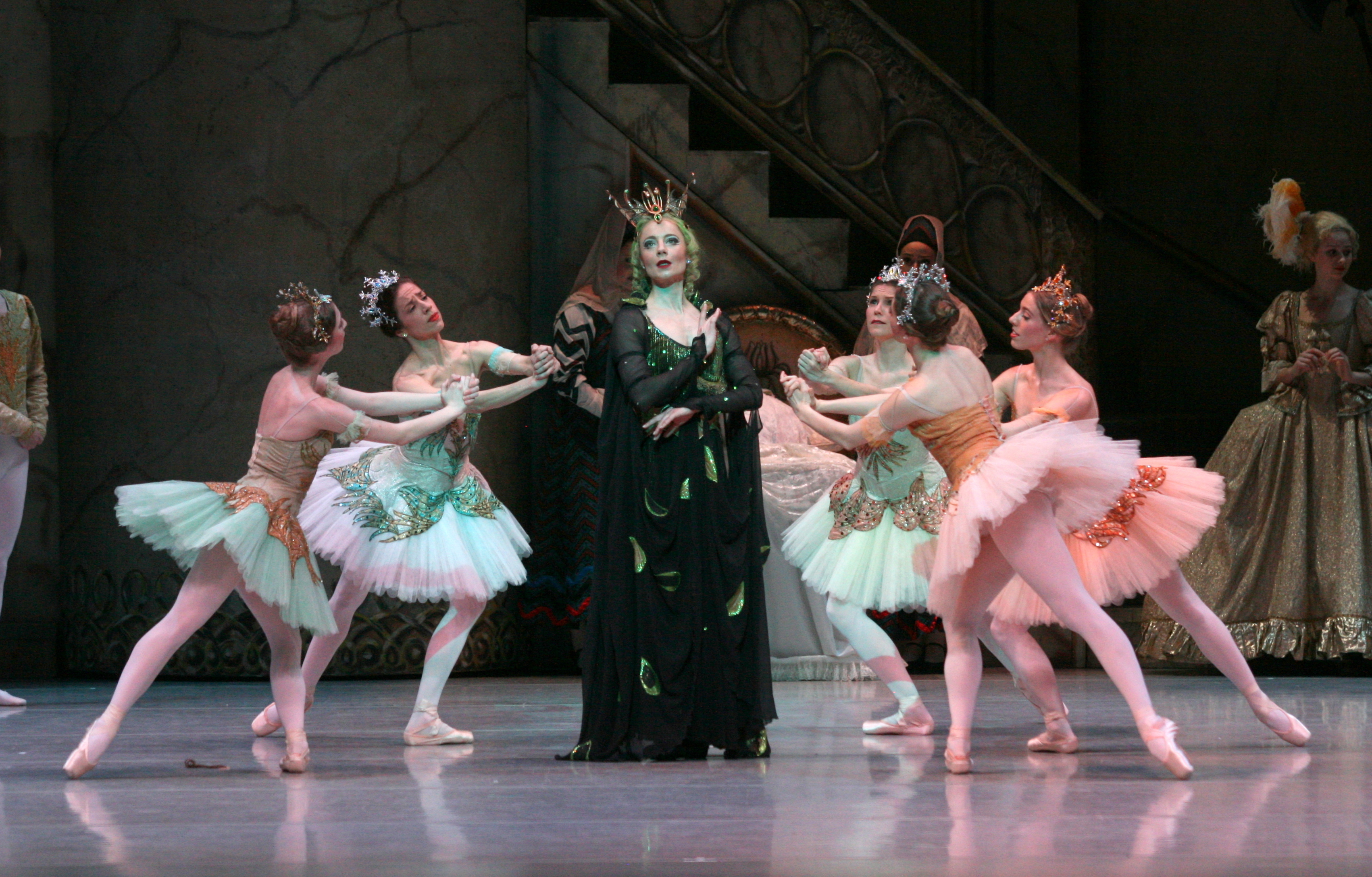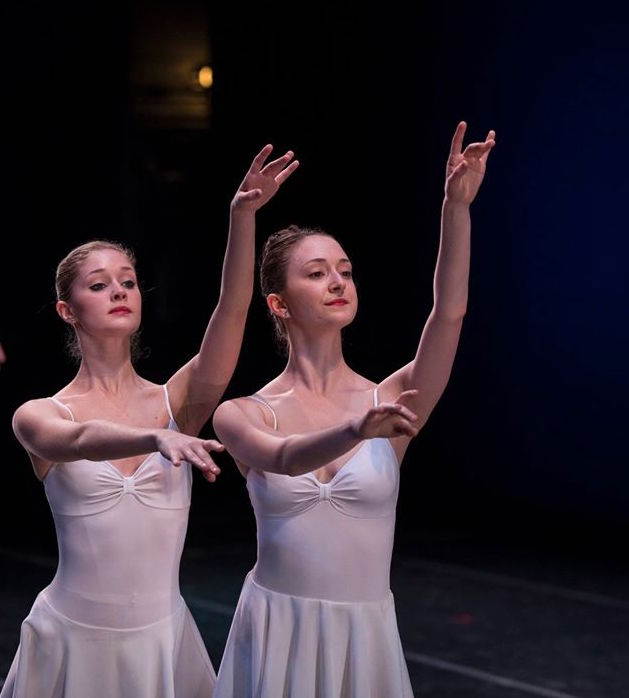Brandon Ragland & Minh-Tuan Nguyen in “A Midsummer Night’s Dream” / Celebrating Alun. Photo:Andrew Kung
Celebrating Alun
Choreography by Alun Jones
Violin Concerto, music by Sergei Prokofiev, Liebestraume, music by Franz Liszt, performed live by Sebastian Chang, A Midsummer Night’s Dream, music by Felix Mendelssohn
A review by Samantha Morrison
Entire contents are copyright © 2022 by Samantha Morrison. All rights reserved.
In 1975, Alun Jones and Helen Starr moved to Louisville, as, coincidentally, did I. The creative energy of Louisville at the time was palatable. The Louisville Orchestra was commissioning new, cutting-edge works, by outstanding contemporary composers. The Center for Photographic Studies, an alternative school of creative photography had opened and the design community, led by Julius Friedman ( who would later design a signature poster for the ballet company), was on fire. Alun Jones would soon propel the Louisville Ballet on a new and extraordinary trajectory too.
Over the next quarter of a century, Alun Jones, with the support of his wife Helen Starr, would lead and shape the Louisville Ballet into a shining example of a strong, professional, regional ballet company. He would also entice world-class dancers to come to perform with our company, thus validating the organization’s progress and building its confidence. It was a task that took enormous commitment and talent.
So, how do you honor the legacy of one man’s life’s work as you continue to drive your company into the next century? Tonight the Louisville Ballet honored that legacy with Celebrating Alun a three-part program highlighting Jones’ choreographic talents and the company’s innovative vitality.
The first piece, “Violin Concerto,” music by Sergei Prokofiev, is an example of how Jones was inspired by music. It is an ensemble piece, which explores the geometry of the performance space and how it is altered by human interaction. The piece is a constant reordering and layering of the movement to the undercurrents of the music. Each variation has a lovely and unique dynamic, while at the same time, there is not a moment when Jones does not repeat and extend the phrasing. The partnering is beautifully composed in ways that the male dancer is never just a way for the ballerina to defy gravity, but rather using the two bodies as one to complete the extended line of movement. It is the perfect example of Jones’ musicality and his ability to fully animate the body. His dancers don’t simply engage one part of their body to the exclusion of the whole. The movement is complex and demands the dancer’s technique be immaculate. It was a fitting way to start the evening. This ensemble piece lived up to its intent and was impeccably danced by the whole cast.
“Liebestraume” is performed to solo piano by Franz Liszt and was beautifully played live by Sebastian Chang. The setting is a Victorian drawing room with couples listening to a pianist. The stage set is simple with a progression of three arched doors leading to the garden. As the couples enter the room and become reacquainted the music stirs memories of past intersecting lives and exposes current stale relationships. The story unfolds as the interplay between the characters is revealed through the movement, which is both sweeping and modest.
Although deeply felt, this isn’t a dance of overtly dramatic gestures but rather one with the subtlety of the intriguing ballet ”Lilac Garden” by Antony Tudor. Using the quiet moments of the music the characters reveal their inner narrative. The swirling movement of the ballroom dancing and artfully moving couples is contrasted by the delicacy of the small gesture. The extent of the couple’s disconnection is revealed gradually; clues are offered through simple, subtle gestures of longing and pain. Jones’s ability to continue the movement, and the story, during silent passages is most effective.
One particularly lovely passage is in “Sonetto Del Petrarca #104” as one couple dances elegantly inside the well-lighted ballroom, and another moves in the darkness of the garden just through the door. It is a moment of profound beauty and pain. The pas de deux for each pairing is especially beautiful. Natalia Ashikhina is singularly poignant throughout the piece and recalled the qualities of grace and expression that we enjoyed with Helen Starr through the years.
Content and character drive “Liebestraume” but the last piece of the evening takes us back to where most of us begin in our love of ballet…the story ballets of our childhoods. “A Midsummer Night’s Dream,” utilizes all of the audience’s senses. A Renaissance man of the first order, Jones enjoyed engaging all of his talents and the story ballet invites that involvement. As a trained musician his understanding of the score was invaluable but Jones was also an acutely visual person. “A Midsummer Night’s Dream” was the perfect vehicle for his talent.
As the curtain rises we find ourselves in a lush and beautifully lighted landscape that could have been painted by the French painter Jean-Honoré Fragonard. That rich visual indulgence continues throughout. Jones clearly loved Mendelssohn’s music and the movement of the ballet but he held the same passion for the costumes, headpieces, and sets, He frequently played a huge role in the design of each element of the ballet, even making many headpieces himself. The costumes for this production are beautiful and indicate his attention to detail. This ballet also offers the whimsey and humor in which he reveled. “A Midsummer Night’s Dream” was an opportunity to indulge in magic, both the enchantment sort and the magic of delightfully choreographed dance.
Another element of the ballet which is rarely credited (unfairly) is the Corp de ballet. Jones understood and appreciated the Corp de ballet better than most choreographers. The Corp is a tool which frames and offers complexity to the stage. It adds texture to the dance and Jones knew how to employ it well. This is not dancers standing in a row and posing, his Corp da ballet compositions are complex and very difficult. Yes, straight lines are important in most Corp work but Jones creates numerical patterning with ever changing levels, and angles in continuous movement. It is a bit like seeing the dancers as shapes through a kaleidoscope. The alignment to the person next to you is essential but so may be the alignment with someone on the other side of the stage. His talent for choreographing and activating that texture was extraordinary. Equally important was Helen Starr’s ability to teach good Corp de ballet work which enabled those complex figures and patterns to be executed with crisp precision.
Story ballets were also a prompt for Jones’ sense of humor and stagecraft. Puck, danced with verve and mirth by Minh-Tuan Nguyen, is a perfect example. The part, demanding in its execution, brings great joy and laughter to the piece while it moves the story forward.
Robert Curran receives my thanks for presenting a tribute evening befitting Alun Jones contribution to the Louisville Ballet. The dancers performed the works beautifully and created the magic Alun loved.
For me, there was only one disappointment in a wonderful evening of dance and remembrance. I longed for some kind of closure. Alun Jones and Helen Starr were partners, creatively, in the transformation of the company, and in life. She is credited in the program for the staging of the pieces. I wanted Ms. Starr on the stage in the final curtain call. She has earned that honor and I missed her presence at that warm moment of applause.
Celebrating Alun
Friday, November 4 at 7:30 PM
Saturday, November 5 at 2:00 PM
Saturday, November 5 at 8:00 PM
Louisville Ballet
Brown Theatre
315 West Broadway
Louisville, Kentucky 40202
Louisvilleballet.org
Samantha Morrison is a special contributor to Arts-Louisville.com. She is an artist, writer, and curator with over twenty years of experience in the visual and performing arts in the Midwest and Kentucky.





